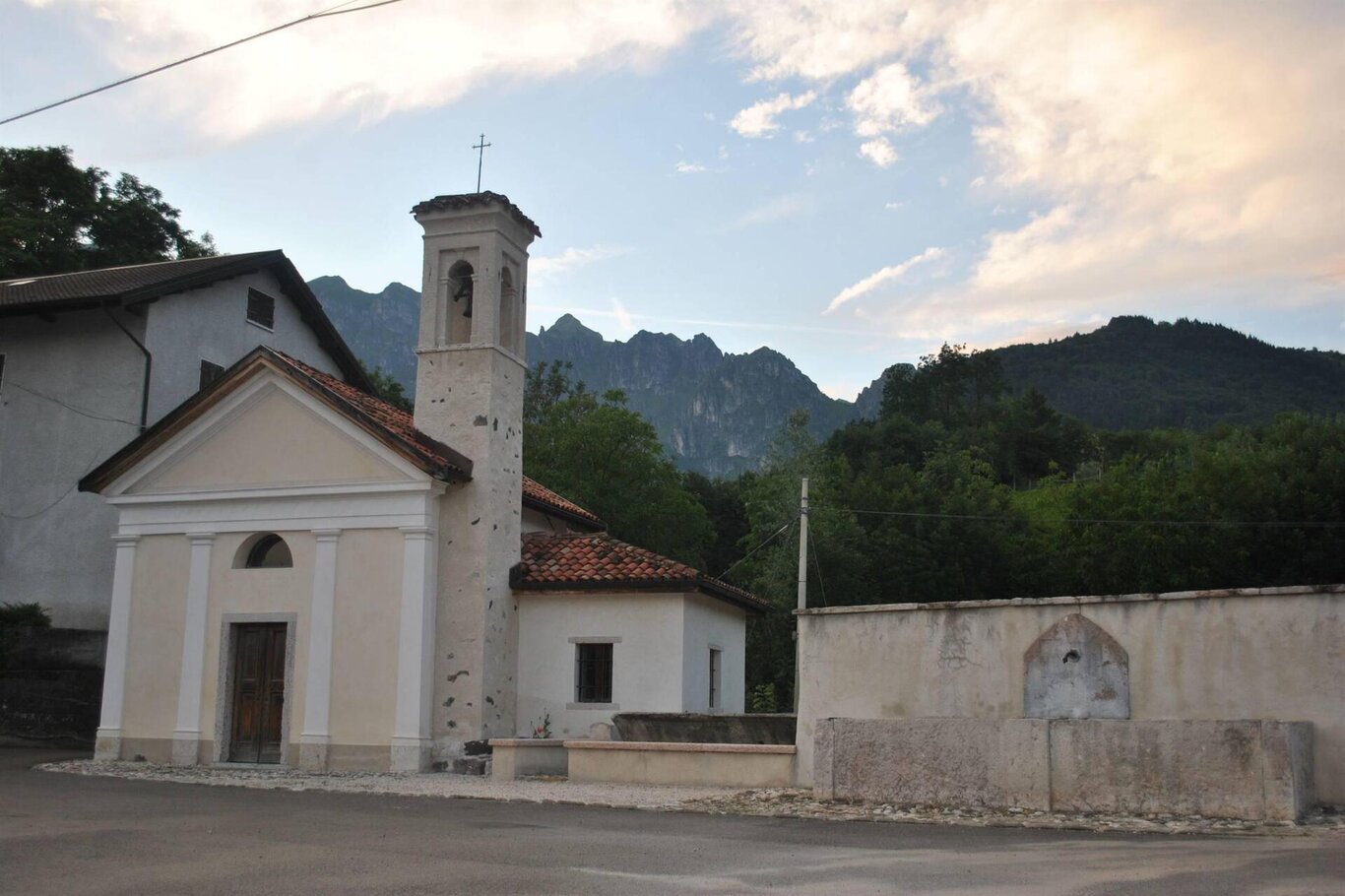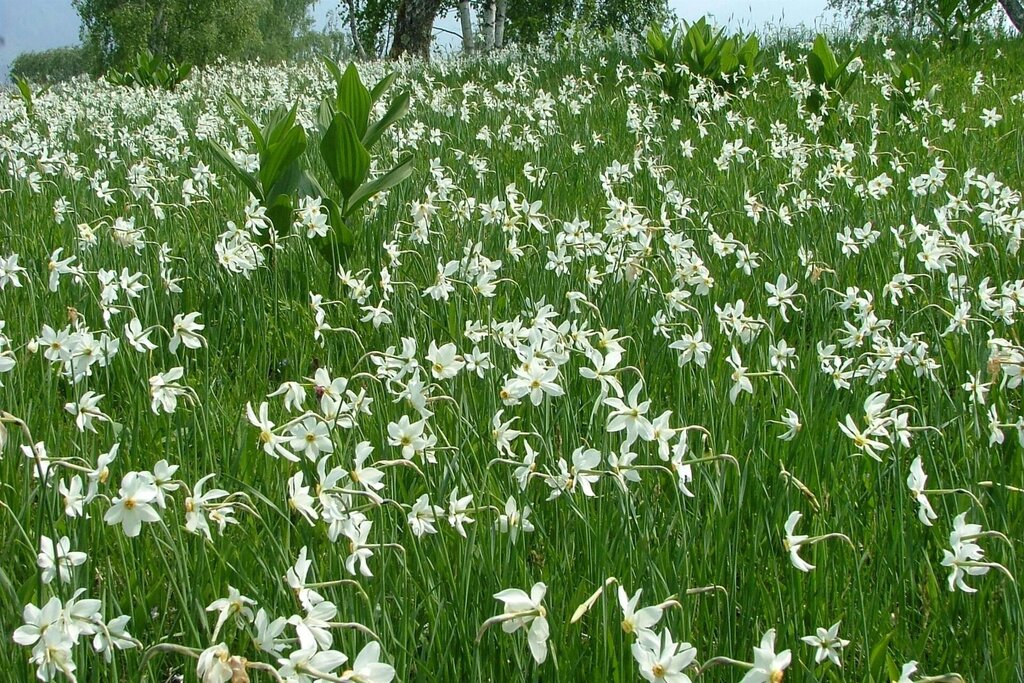The itinerary starts in the center of Pedavena, and it is possible to park the car near the Town Hall and the Church or at Birreria's parking lot. From here, a cycle and pedestrian path, along the Colmeda stream, leads to the center of Pedavena in 10 minutes.
From the starting point, take the narrow Via Trento until reaching a junction, where you continue towards Norcen. After about 15 minutes of walking, near a votive shrine, deviate from the main road to climb to the panoramic terrace where a villa with rustic outbuildings stands. Follow the trail that, higher up, joins the road connecting Pedavena to Norcen. Ascending the road, you reach the center of the village, and exploring the alleys, you can discover beautiful glimpses of rural architecture.
Then, you reach the parish church uphill from the village, where there is a picnic area. From the church, follow the asphalt road that leads to the inhabited area of Valduna. Turning right, ascend to the locality of Cava, where a large wooden crucifix is placed.
Continue uphill to the left until reaching a complex of rustic buildings situated in a beautiful location. Upon reaching a large beech tree and a spring protected by a stone wall, ascend to the right, intercepting the road that leads to Paradis a little higher up. At this point, the itinerary descends to Case Valerna, where it intersects with the road coming from Valduna.
After passing the Stalle Boa clearing, you climb up the head of Val Porcilla, reaching Croce d'Aune, the highest point (see 5 - Camogne for a detailed description). It is recommended to conclude the first stage here (3.30 hours from Pedavena), taking the opportunity to take a walk in the surroundings (Itineraries 11 - Mount Avena, 12 - Croce d'Aune, Chiesette pedemontane).
Those staying in the area and having a few days available can undertake the challenging excursion that leads to Rifugio Dal Piaz and the fascinating Busa delle Vette. The second stage starts from Croce d'Aune and, passing through Stalle Camogne, reaches the beautiful area of Paradis (see itinerary 5 - Camogne for a detailed description).
Then, you come across a maiolèra, with walls made of stones of various colors, brought here during the glacial period and recovered from the surrounding terrain. Upon reaching Casera Fioretta, an asphalt road takes you downhill through the meadows of Salzena. Just below Casere Monegat, at a bend, take the left path that descends to a crossroads in a few minutes.
At this point, continue along the trail that leads to Val di Lamen, then to the homonymous village and finally to the village of Carpene (see itinerary 4 - Fastrede for a detailed description). From the square in Carpene, descend following the road in front of the church of St. Valentino until, after a few curves, reaching a crossroads near a stone fountain and the old dairy.
Continuing straight, take the track that allows you to reach the asphalt road leading directly to Pedavena in a short walk. After about ten minutes, you arrive at the inhabited area of Tornaol and, passing in front of the Church of St. Giovanni Battista, reach the center of Pedavena.
FURTHER INFORMATION ON… The maiolère: an evidence of our past
Above 600-700 meters in altitude, in what used to be the pre-alpine zone, rich in pastures, there is a gradual transition from permanent rural settlements to temporary ones called maiolère, mainly used in the springtime before taking the cattle to the mountain huts. A sign of this transition is the stepped stables, influenced by Germanic architecture, characterized by steeply sloping roofs originally covered with straw fixed with slabs. On the ground floor, there was the stable, and above it was the hayloft accessed from the back, taking advantage of the slope of the mountain. More typical of the Pedavena area is the maiolèra, consisting of two buildings with different orientations: the stable and the casèra. The latter, a single-room structure, had a larìn (a hearth for heating and cooking), with a hole in the wall for smoke ventilation and served as a shelter for shepherds. The roof, initially made of stone slabs, was gradually replaced by terracotta tiles. Above the stone-built, semi-underground stable, there was the open barn, protected by planks to allow for air circulation. The forage stored there was cut in the adjacent pasture where the characteristic méde (large bundles) were also found.
USEFUL INFORMATION
Start and finish: Pedavena town center (335 m a.s.l.)
Places crossed: Norcen, Valduna, Valerna, Stalle Boa, Croce d’Aune, Cimamonte, Camogne, Pian dell’Albero, Paradis, Menegat, Salzena, Monegat, Prà Maoro, Fastrede, Lamen, Carpene
Signage: blue and white directional arrows with the words “Anello del Paradis”
Lenght: 20,7 km
Elevation gain: 740 m
Travel time: h 9.00 (overall)
Difficulty: hard (made in one day) – medium (made in two days).
Recommended period: accessible all year round, but preferably in spring for the undergrowth blooming and in fall for the colors of the vegetation.
Points of interest: village and church of Norcen, landscape of the Valle di Lamen, lime kiln in Valle di Lamen, typical rural buildings, church of St. Valentino in Carpene, Villa Pasole-Berton and Dolomiti Bellunesi Visitors Center in Pedavena.
Note: this itinerary is very long, resulting from the combination of the Croci, Fastrede, and Camogne trails. It can be completed in a day only if you are fit, have provisions (especially drinks) and have enough daylight hours. However, it is recommended to tackle it in 2 stages, staying overnight in Croce d'Aune. It can be done in a day on a mountain bike, but it requires experience and training. Additionally, there may be some sections where it will be necessary to push the bike.
You are in a natural environment that requires respect:
- Prohibition of collecting flowers
- Prohibition of bathing
- No to the shouting
- Prohibition of ignition of fires
- Do not leave waste around, but throw them in the appropriate spaces (also cigarette butts, tissues, masks and wet waste)
- Minors must be accompanied
- Dogs must be kept on a leash and their collected excreta
- Do not leave the path
- Do not disturb the local fauna
It is suggested to inquire through the ARPAV website about any disturbances before embarking on the route.


